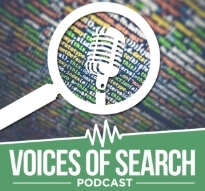Tyson Stockton
Searchmetrics

Show Notes
-
? 01:41Understanding demand? 02:50 -Putting together data sets to get a holistic picture
Quotes
-
“The first piece in understanding demand is how broad are you acquiring the data. The simple go-to is by grabbing an individual keyword and using that as a proxy for an entire category.” -Tyson
-
“There are several sources there for keyword search volume. Probably the most well known is obviously Googles keyword planner with some limitations depending on your AdWords account is. Other tools are, searchvolume.io and one value that we use at Searchmetrics is that we are able to put in from a couple of different sources and then give a specific name search name for it.” -Tyson
-
“Also, with the duration of the data set that we have, we are also ableto look back to the rearview mirror and if you ask why are we looking back if we want to know the direction of the industry, but really understanding how it has evolved, what the seasonality of that search volume is, can be helpful in not just understanding where the business is today but also where the business is headed.” -Tyson
-
“Essentially, how we are going about it is, we have created a couple of different algorithms and queries to spiders crew our existing data set and we are looking for similar related keywords and were also looking at competing URLs, what are the keywords ranking on those URLs and then using that to then identify similar keywords.” -Tyson
-
“From our sense, what were doing is we have actually used some levers and some different programmatic elements of having this treasure chest of existing ranking data.” -Tyson
-
“It goes into understanding what you are searching for and honestly it goes back into the definition of demand. Somebody might be searching for the history of running shoes, it doesnt necessarily mean that they have demand for running shoes or that they are in the market for running shoes.” -Ben
-
“We are pulling in some of the keyword intent element for that. If someone searches for something more granular like an individual model or brand, they are going to be farther along in the buying cycle and closer to making a transaction and making a purchase.” -Tyson
-
“The way we cluster keywords from a high level is navigational, informational, and transactional. Those are the main categories that we have been clustering keywords in and then depending on what the percentage of keywords in each of those categories can give you an indication of what stage in the buying cycle the consumer is at.” -Tyson
-
“The seasonality aspect is key because a lot of times from a high-level cluster saying like this is the average monthly search volume for a keyword, and breaking that volume into a cluster by month so you can cluster into quarters, or whatever is more relevant into your business, is going to be key because you can take a lot of terms that are going to have a spike, lets take it to the extreme, say Black Friday queries. Thats a clue of when you should be playing content.” -Tyson
-
“If youre able to use SEO and search demand to actually show that it can be used as a market research tool for other parts of the business, one is inherently increasing awareness of search in general. There is a lot of value and its a great lever to pull.” -Tyson
-
“Also comparatively speaking if you would look at how market research study would cost business, it can be a very cost-effective way to get to those numbers.” -Tyson
-
“From the executive perspective, understanding that your Total Addressable Market is going to fluctuate over time, it can change how you prioritize your products and honestly your business model. It is incredibly powerful to make sure that you are always operating with the wind at your back and not in your face.” -Ben
- Part 1What Search data is relevant for market insights
- Part 2 Understanding demand using search volume
- Part 3Understanding historical trends using keyword data
- Part 4Outperforming your competitor using ranking data
- Part 5Learning your consumer intent through SERP data
Tyson Stockton
Searchmetrics

Up Next:
-
Part 1What Search data is relevant for market insights
Play Podcast -
Part 2Understanding demand using search volume
-
Part 3Understanding historical trends using keyword data
Play Podcast -
Part 4Outperforming your competitor using ranking data
Play Podcast -
Part 5Learning your consumer intent through SERP data
Play Podcast








